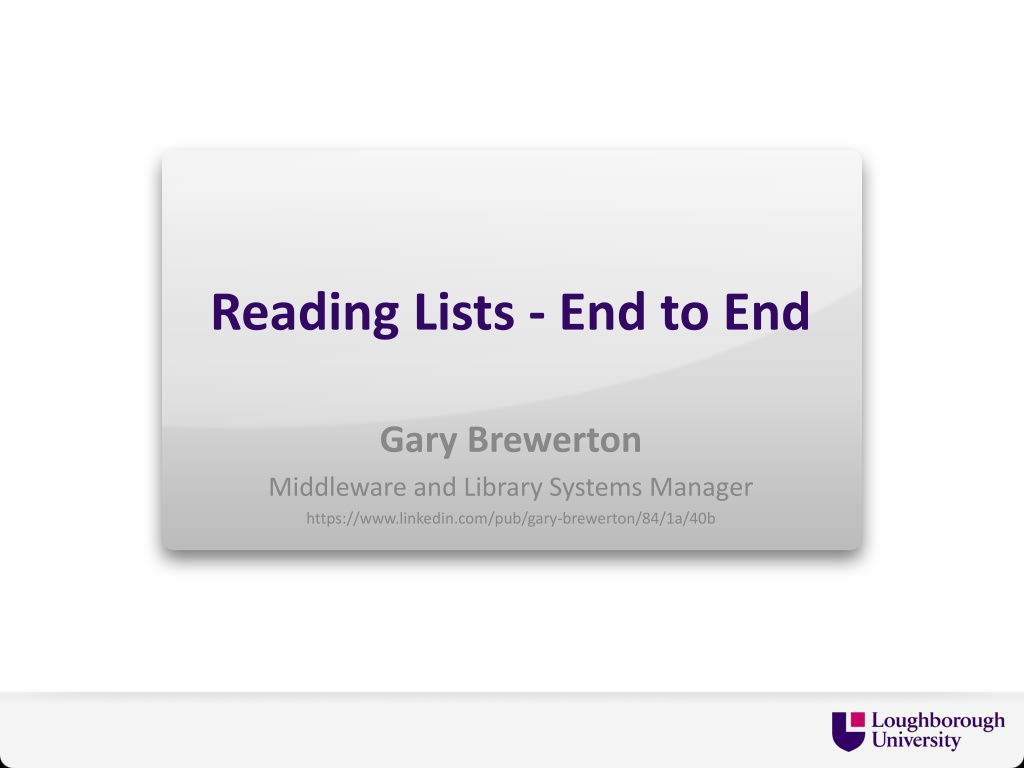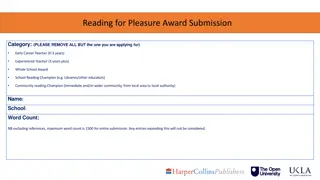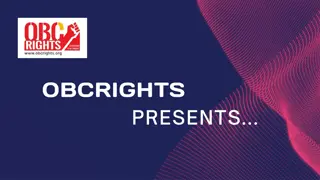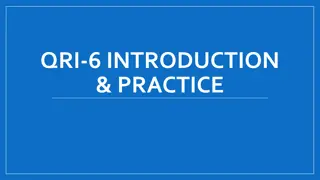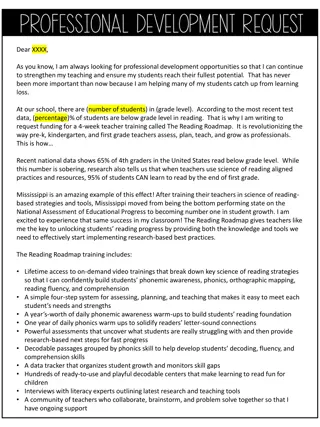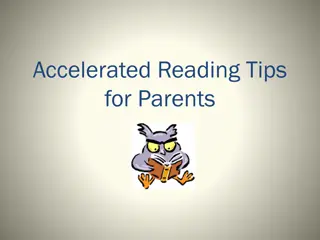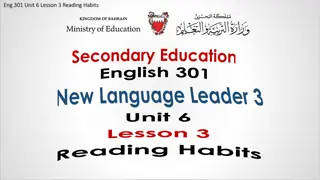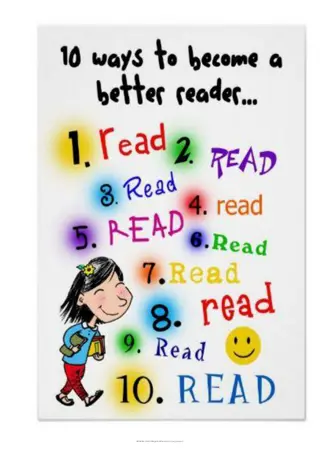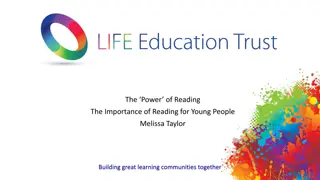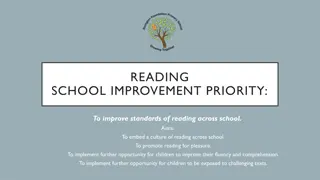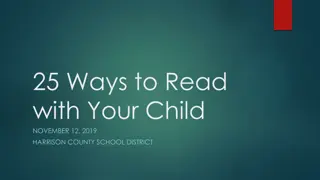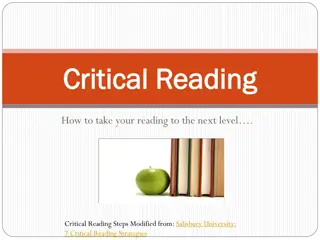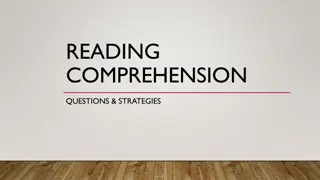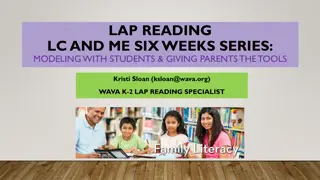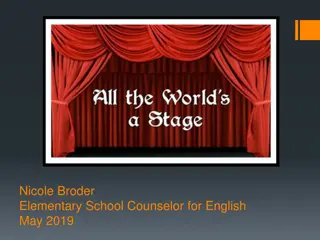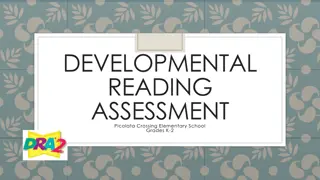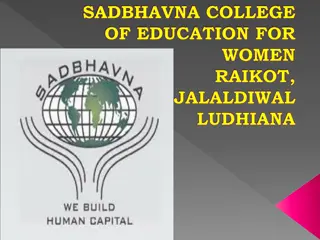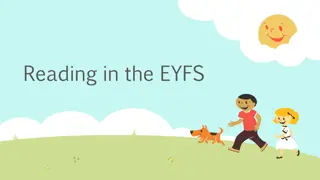End-to-End Reading List Management Process
"Setting the context for reading lists, understanding the RLMS at Loughborough University, addressing ongoing processing issues, and improving processes through methodology review and customer-centric approach."
Download Presentation

Please find below an Image/Link to download the presentation.
The content on the website is provided AS IS for your information and personal use only. It may not be sold, licensed, or shared on other websites without obtaining consent from the author.If you encounter any issues during the download, it is possible that the publisher has removed the file from their server.
You are allowed to download the files provided on this website for personal or commercial use, subject to the condition that they are used lawfully. All files are the property of their respective owners.
The content on the website is provided AS IS for your information and personal use only. It may not be sold, licensed, or shared on other websites without obtaining consent from the author.
E N D
Presentation Transcript
Reading Lists - End to End Gary Brewerton Middleware and Library Systems Manager https://www.linkedin.com/pub/gary-brewerton/84/1a/40b
Contents Setting the Context What is a reading list/RLMS Reading lists at Loughborough An ongoing issue Process review Methodology used Following the workflow Mapping the process What next?
What is a reading list/RLMS Reading list A list of resources (books, journals, AV material, websites, etc.) compiled by an academic to support students in their studies Reading List Management System (RLMS) enables students to access their reading list online and check availability of recommended resources allows appropriate staff to create and maintain the reading lists provides the Library with information to support its collection development
Reading lists at Loughborough We ve had our own in-house RLMS (called LORLS) at Loughborough since June 2000 Initially we hired students to pump prime the system Thereafter academics took on responsible for maintaining their own reading lists New academics trained by library staff to use the system In February 2011 we introduced significant new version of the system Included multiple methods of creating/updating reading lists
An ongoing issue We ve had a lot of success with reading lists but we still have an ongoing issue with backlogs in processing them at key times of the year this can lead to delays in getting books on the shelves when needed 15.00 Days to process 10.00 5.00 0.00 August Sept Oct Nov Dec Jan Feb Mar April May June July Month
Process review methodology DEFINE the process that we are seeking to improve and their purpose. But define from the customer s perspective rather than from our own organisational structure. CHECK collect information and data on the current process from the perspective of the customer. This could be email, phone calls or observing front line drop-ins. Do this by FOLLOWing the flow of the process around the organisation literally. Speak to front-line staff not just their managers. And most importantly gather information on their interactions with customers. CATEGORISE that data into Value and Failure demand. The first is where in responding to the request we are genuinely adding value and the latter is where we are correcting something we should have ideally got right first time MAP the current flow of the process at a high level again from the customer s perspective ANALYSE the demand patterns and current flow. Identify where we have waste, hand-offs and duplication. DESIGN a new, simpler flow at a high level. EXPERIMENT with a sub-set of customers by taking them through the new process. The reason for a sub-set is it allows you to test and refine process using manual methods i.e. without a need at this stage for an IT solution. SCALE-UP the experiment by computerising the processes and rolling in additional work.
Beginning the review Defining the problem from a customer perspective NOT removing backlogs in the Library BUT Get my reading list items on the shelves now! Collecting information and data Reports produced from RLMS and Library Management System Go and see following the process around the institution by seeing academics in their offices, tracing the workflow within the Library and surveying students in lectures Noting failure demand (waste, duplication and hand-offs) and where value is added in the process
Following the workflow: starting with academics Disconnect between what some academics have on their printed lists and what they make available online Some maintain multiple versions of their reading lists DUPLICATION Academics mandated to put resources on the VLE sometimes to the detriment of the RLMS Tend to update reading lists just before courses start and can forget how to use it However, when asked to add an item all successfully did so Never had a book request turned down
Following the workflow: around the library Internal processes have grown organically rather than being designed from the start Cumbersome workflows leading to delays in acquiring new or additional resources WASTE Unofficial workarounds to deal with some issues (e.g. liaison staff editing reading lists on behalf of academics who can t/won t do it themselves) ADD VALUE or HAND-OFF? Library suppliers don t delivery books the next day unlike certain online retailers Difficult to justify this to both academics and students
Following the workflow: ending with the students Recently surveyed 150 students from various departments during a lecture Currently compiling the results However, from previous student surveys we know there should be more emphasis placed on them by tutors/lecturers, as they can often be forgotten about need to be updated on a more regular basis to make them more relevant often list too many books that either are too expensive to buy or get taken out by others students from the library
Mapping the process (high level) The current workflow when an academic updates a reading list
What next? Continue collecting information Speak with other stakeholders (e.g. students Union, e-Learning team, Learning & Teaching Committee) Complete the review Analyse what we ve discovered Design a cleaner process Experiment by taking selected academic and library staff through the revised process Scale-up the experiment for the institution (including possible development of the RLMS)
